When constructing buildings, it is important to take care of the electrification of the construction site in advance. It is impossible to carry out construction without the help of electrical appliances. All the necessary tools - drills, concrete mixers, hammer drills, welding machines - are powered by electricity. It is not always possible to create standard electrification, therefore they use temporary power supply. It is used both in the construction of residential (apartment or private) houses, and for the construction of non-residential buildings.
Basic requirements for the electrical network
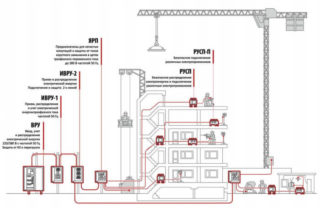
Since electricity poses a potential danger to builders, the site must meet a number of criteria, without which it is prohibited to make temporary power supply.
- Reliability. The supply must be uninterrupted during the entire construction period.
- Quality. The power supply parameters must comply with the standards and guarantee the stable operation of electrical appliances.
- Safety. All personnel must be protected from electric shock, and the system itself must be made of high-quality reliable components.
After checking that all safety conditions are met, temporary electricity can be supplied.
Temporary supply of electricity to the site
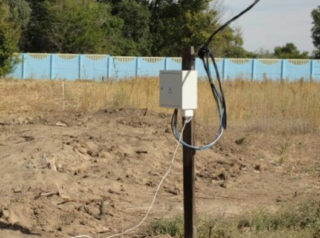
The provision of temporary power supply to the site is associated with a number of organizational issues. The connection is made to already existing highways. Depending on the location of the site, the best way of temporary power supply is selected. The choice depends on the following criteria:
- the distance of the nearest power line;
- type of object;
- required power;
- kind of network.
In case of connection to an existing power grid, you should contact the power sales organization to find out the connection procedure and other conditions. There is no need to request permission for a stand-alone generator. How much all the work on temporary power supply will cost and how long it will take depends on the chosen scheme.
Features of connection to existing power grids
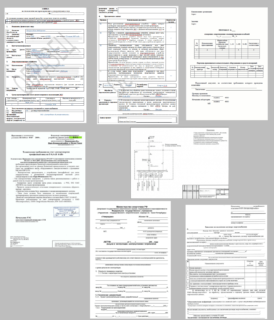
If a construction site is located next to your own housing, electrification will be the least expensive. During construction, the energy that is already available at the facility will be spent. Payment will be made according to a previously concluded agreement with a service provider. In the case of the construction of new facilities, it will be necessary to re-register with the company supplying the electricity. To do this, you will need to do the following:
- To write an application.
- Indicate the estimated power consumption and the approximate period of use.
- Create an estimate.
- Obtain technical specifications from the organization and select a connection point for input.
- Order project documentation.
- Coordinate the project with the state technical supervision.
- Perform electrical work.
- Call an expert to evaluate and draw up a test report. The act is signed in two copies - one remains with the applicant, the second with the organization.
- Conclude an agreement with a power sales organization, sign the necessary documents.
- Put the object into operation.
The application is written in a strictly regulated form.A sample is available from your sales company. You can submit the necessary documents both in person and by registered mail or via the Internet.
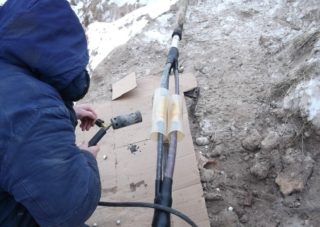
If the nearest power line is far away, cable routing may be required. To fulfill it, you should contact the organization dealing with the supply of electricity, write an application for technological connection and obtain technical specifications. After that, you should fulfill all the stated conditions and contact the company again to connect and seal the electricity meter.
It is imperative to connect a shield to the input for temporary connection to power grids as for a permanent power supply. For this, a shield with anti-vandal protection and IP54 class is installed. Its dimensions must be such that it is possible to install the meter, protective devices and grounding bars. You should also find a place to install a backup power supply.
Power supply from generator
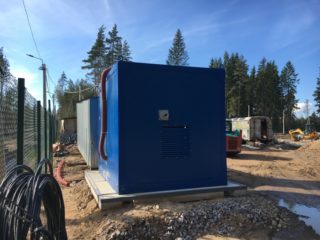
An autonomous generator is a source of a stable supply of electricity to the construction site. Its installation does not require coordination and connection to power lines, as well as the cost of wiring cables to a power source. The only drawback is the high cost of the equipment. Typically, generators are used at the first stage of construction, while temporary power supply is being formalized and connected.
Technical activities
When all organizational issues are resolved, you can proceed to determining the location of the introductory panel. If the site is located more than 25 meters from the power line, installation of one more additional support is required in accordance with the requirements of the PUE. According to the rules, the shield should be installed at the border or on the territory of the applicant. Cables and supports are taken from the shield to the construction sites.
Connection diagrams
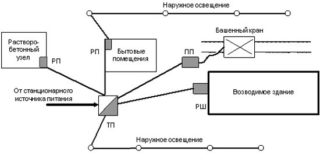
Temporary connection to power grids during the construction period is accompanied by the appearance of new routes for laying cables of a certain brand and length. All this data should be reflected on the diagram even before they are laid. There are several types of connection schemes - radial, ring, mixed wiring.
Radial design differs in power supply from a single input machine, from which electricity is supplied through cables to power plants and lighting devices. If there is a generator, a ring or mixed scheme is chosen.
The radial temporary power supply scheme is duplicated by the connection from the generator, therefore, in case of problems with the power supply, the installation can be powered from an autonomous device.
Input construction
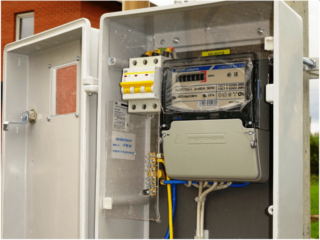
When assembling the shield yourself, you must comply with a number of requirements. All protective devices, energy consumption meters must be located in a sealed package that will protect them from moisture and dust. It is also necessary to organize the grounding of the shield and zero from the overhead power line, as required by the PUE. All safety measures must be taken during construction work.
Cables can be laid in two ways - overhead and underground. When laying overhead, make sure that the wires do not touch trees, houses or other objects. The suspension height is calculated in advance. Trenching is also carried out at a pre-calculated depth (from 80 cm) on a sand cushion.
Safety engineering
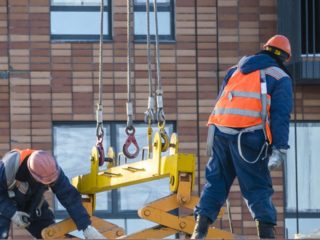
The construction site is a traumatic facility, therefore, to preserve the health and life of builders, safety precautions must be observed. It also applies to equipment to which special requirements are imposed. They are associated with the negative impact of the environment - the influence of ultraviolet radiation, weather conditions, high humidity. Materials must be non-flammable.
The construction site must be free of caustic chemicals. Only specialists with the appropriate qualifications and admission group are allowed to work.
A grounding system and potential equalization elements must be created. For this, isolation transformers and a system for combining all open enclosures with protective connectors in the socket are used. In case of high humidity, protection is carried out using an RCD.
When creating a lighting group at a construction site, lamps with a protection class of at least IP54 in a sealed housing are used. The documentation for the devices must state that they can be used outdoors.
You will need several light sources with the ability to move around the site. It is also necessary to put several luminaires in a temporary room where the work will be carried out, with mechanical stability.








